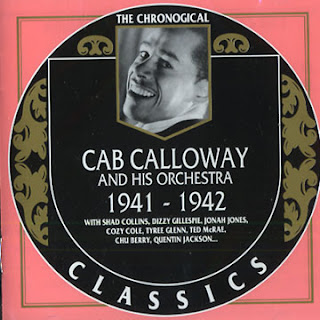Jackie McLean and Co. - Introducing Ray Draper and Tuba
Jackie McLean & Co. is an unusual hard bop album from the great alto saxophonist. Ray Draper on tuba is featured on three tracks on side one and his presence so greatly affects the arrangements and the other musicians, that the quartet tracks on side two without Draper sound like a different band altogether. Recorded on February 8, 1957, the group is rounded out with Bill Hardman on trumpet, Mal Waldron on piano, Doug Watkins on bass, and Art Taylor on drums.
While the tuba does not play any melody, it is prominently heard on bass lines or countermelodies. Draper overall sounds good especially considering his instrument and his age. His improvisations are not strictly based in bebop and he makes up for lack of speedy technique with an emphasis on motivic playing and color tones.
It's a bit of an unusual hard bop record not only because of "Draper and tuba", but also for Mal Waldron on piano. His subtle individualism can be heard on his motivic-derived improvisations. Rooted in blues principles, he prefers to develop an idea rather than state the chord changes directly. When he does play familiar jazz vocabulary, he'll change the direction by stopping in the middle of a line to repeat a phrase. Repetition is a key device of his and while it is typically used to build in dynamics, Waldron does so in a manner that is understated.
Draper seemed to be flavor of the month as he would record a few more sessions that year with John Coltrane, Art Blakey and on his own record date as a leader, Sadly he battled drug use and his career proved uneven. By the time he finally cleaned himself, he was senselessly killed in a robbery in 1982. He was only sixteen years old at the time of recording and while he's not as strong as the others, his impact is felt. Not sure if this was Bob Weinstock's idea to include Draper, but either way it shows McLean's attitude towards encouraging young musicians (Draper was only sixteen at the time of recording), a trend that can be seen oon later albums and as a jazz educator, founding the program at the Hartt School of Music in Hartford, Connecticut.
 |
| Mal Waldron |
After Draper and Waldron, Jackie McLean almost seems like an afterthought, but basically the dark tones of Draper and Waldron's compositions only serve to heighten the bright, proud, and passionate sound of McLean's alto. He takes the longest and strongest solos and the band really comes together during these moments. The rhythm section digs in harder and drummer Art Taylor seems more comfortable, becoming increasingly active behind McLean.
Hard bop trumpeter Bill Hardman is excellent in this 'hard bop plus' context. At least on this record, his playing is understated and generally seems to be playing quieter especially next to McLean. He prefers to begin softly and often builds his solos with his wide vocabulary of lines. He is not as brassy as Lee Morgan or as poetic as Clifford Brown, but he has his own voice. Bassist Doug Watkins has a deep sound reinforced by the fact that he tends to prefer the lower register of the bass. I guess most players of.that era did, but he seems to be more content. His swing feel is authoritative and works well with Taylor on this record. His lone solo on "Help" shows him freely phrasing around the beat, demonstrating his solid soloing abilities.
Only McLean's "Beau Jack" is strongly rooted in hard bop with its strong gospel and blues overtones complete with rhythmic punctuations from borrowed from Ellington's "Don't Get Around Much Anymore". Featuring the quartet sans Draper, the soloists stretch out and in the middle of each solo, Taylor begins playing double time while Watkins stays in the regular meter. This is a technique that was made famous by drummer 'Philly Joe' Jones and bassist Paul Chambers on John Coltrane's "Blue Trane", recorded seven months afterwards.
Bassist Doug Watkins' "Help" is an interesting composition: the head features a modal one chord vamp with four voices layering in before reverting to a minor blues. "Minor Dream" by Draper includes a melodically descending bass line (doubled by tuba of course) with an introduction based on triads.
Waldron contributes two compositions that further showcase his unique individualism: the slow ballad "Mirage" which features the quartet, is filled with meandering ii-Vs. Appropriately titled, it modulates so often that there is no sense of a tonality---when it does stay in one spot it happens at the end of the bridge! Like his most famous tune "Soul Eyes", the melody is plaintive and guides the line. "Flickers" also features some harmonic twists. It has unusual triadic movement on the head and an extra six bars at the end of the last section.
Rooted in hard bop, this album explores a lot of other possibilities in jazz regarding improvisation, composition, arrangement, and timbre. There is a stronger sense of personal methods of expression that was not common, but that would become prominent in the years to come.






Comments
Post a Comment